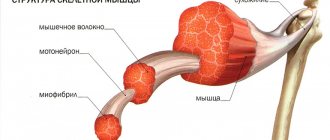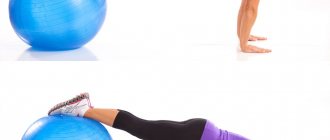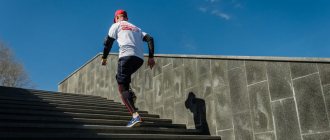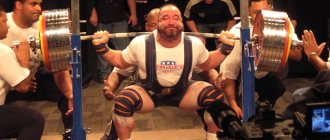A very important component of any training process is recovery. Many amateur athletes consider it unnecessary and often ignore it, although it directly affects the effectiveness of the training process and health.
Systematic under-recovery threatens the development of overtraining, fatigue changes in the work of the heart muscle and the transition of existing chronic pathological conditions into the phase of acute diseases. What can we say, if even a banal lack of sleep leads to an increase in the number of viral infections by 3 times compared to a person who sleeps 8-9 hours a day.
In addition, we must remember that the main criterion for amateur training should be safety. And we should not work on under-recovery (except for very advanced amateurs), and if we use such techniques, then recover even more carefully after such microcycles.
A well-established myth is the assertion that effective recovery is only possible in professional sports (due to its high cost and cumbersomeness). This is all nonsense. The overwhelming majority of techniques can (and should!) be used by amateurs. Before we move on to discussing post-exertional recovery, let’s remember the main thing - recovery in amateur sports is strictly necessary, it is an important part of the training process and allows you to make it not only as effective as possible, but also safe.
Recovery is currently understood as a set of measures of a medicinal, medical-biological, pedagogical and psychological nature, aimed at quickly returning the main physiological parameters to the original level.
50 developmental exercises for training at home
Urgent and delayed recovery
There are urgent and delayed recovery. Its first type can also be divided into two subtypes: in the first half hour after the end of the load and the next few hours. The main task at this time is to reduce catabolism (destruction) of muscle tissue and its inflammation - these processes always occur to one degree or another after intense exercise. Delayed recovery lasts up to three days. At this time, the body replenishes glycogen, testosterone and other essential elements. The products used should be easy to use, well tolerated and easily reproducible. What methods and means of recovery can be used by amateur athletes?
In order for recovery to be as effective as possible, the following conditions must be met:
- you must understand its importance;
- it must be systematic;
- it should suit you, that is, be individual.
The entire arsenal of such tools and methods can be divided into two parts: what is used during normal, non-intensive training days, and what is used after heavy training and competitions. On normal training days, the optimal strategy should include timed eating, hydration (replenishing fluids) and adequate sleep. On days of heavy training and competition, immediately after them, in addition to the indicated methods, compression clothing and cold baths should be used. You can use other methods (massage, sauna, electromyostimulation, stretching), but their “restorative” effect has not yet been scientifically proven. Now let's move on to a more detailed discussion of each point.
Medicine. Strategies for restoring the body after a match. Part 1
What are football victories made of? From hard training? Right. From high fighting spirit? It is truth too.
There are many components that can be listed, and today we will talk about one of them.
You probably noticed if you followed EURO 2016 that many coaches paid close attention to the physical readiness of the players. A photograph of Gareth Bale in a cryo-bath before the Russian national team match once again confirmed the importance of modern technologies in the physical recovery of the body after a match.
We turned to two authoritative sources, the medical journal Aspetar and the website of the Australian Football Federation, and selected for you excellent material about the physiological processes occurring in the body during the match and after it. And also about strategies used to quickly restore the body.
The material turned out to be quite voluminous, so I had to divide it into three parts.
So first a little medical dictionary
Aerobic exercise is any type of physical exercise of relatively low intensity, where oxygen is used as the main source of energy to support muscle motor activity.
Anaerobic exercise - in this type of motor activity, energy is produced due to the rapid chemical breakdown of “fuel” substances in the muscles without the participation of oxygen. This method works instantly, but quickly depletes the reserves of ready “fuel” (0.5-1.5 min), after which the mechanism of aerobic energy production starts.
glycogen is a source of glucose reserves for the muscle cell itself (in case of heavy load)
Creatine kinase is an enzyme involved in energy production and breakdown. An energy intermediary in the tissues that require this energy most, namely, in the muscles.
Krepatura (delayed onset muscle pain syndrome) is muscle pain that occurs several hours or days after unusual and intense physical activity.
Lactate is lactic acid released by muscles after exercise.
PART 1
Game requirements
In elite football, the number of matches per season, including domestic, continental and international competitions, can reach large numbers. Some players play up to 70 matches per season. Because of this, there are often two matches per week instead of one.
One match per week causes acute fatigue, is characterized by a decrease in maximum muscle strength and requires several days to fully recover.
When the schedule is congested (i.e. two matches a week for several weeks), the repetition of matches can lead to chronic fatigue for players with such a schedule. FIFA recommends at least two recovery days between matches, but this is not a rule, only a recommendation. Anecdotal interviews with managers and head coaches often indicate player fatigue from frequent games. Are these subjective claims supported by scientific evidence? In this case, an overloaded schedule can cause a decrease in physical performance and an increased risk of injury. This aspect will be discussed in the first part of the article.
The second question is how long does a professional player need to fully recover.
The third part will focus on actions performed during a match that lead to fatigue.
The fourth question concerns recovery strategies that can reduce fatigue and speed up the recovery period.
The impact of an overloaded schedule on physical performance and injury
Football involves many activities such as running, changing direction, jumping, hitting, passing, wrestling and physical contact, which can lead to fatigue. Fatigue is characterized by a decrease in physical and mental activity caused by training. During a match, fatigue sets in after brief intense periods towards the end of the match and after the match. Many non-contact injuries occur towards the end of each inning. Fatigue has been suggested to be a risk factor for injury. Fatigue can also be caused by playing frequent matches over a short period. During periods of high stress (two matches per week for several weeks), recovery time is between 2 and 4 days, which may not be sufficient to restore normal homeostasis.
Before the 2002 World Cup, doctors examined the relationship between footballers who played for European clubs and their performance and injuries at the World Cup. They found that 60% of players who played more than one match in the week leading up to the championship were more prone to injury. Also, over two seasons, studies were carried out on 32 professional football players playing in top teams participating in the Champions League for performance and injury rates. Physical activity during official matches (characterized by distance covered, sprinting, number of accelerations) does not significantly depend on the number of matches per week (1 or 2), while the injury rating increases 6 times (p<0.001). With one match per week – 4.1 injuries per 1000 hours; two matches a week – 25.6 injuries per 1000 hours. This was confirmed by a study conducted over 11 seasons involving 27 professional teams. Overall injury and muscle damage rates increase in league matches that have 4 days or less recovery time compared to teams that have 6 days recovery. The data presented highlight the need for improved recovery strategies to reduce the risk of injury. However, before focusing on recovery strategies, it is necessary to determine recovery time, fatigue mechanisms, and the actions in the match that lead to fatigue. Knowledge of these mechanisms should lead to the establishment of a rational recovery strategy.
Recovery time
After a football match, physical performance deteriorates and several days are required for full recovery. Thus, a sprint of more than 20 meters immediately after a match is characterized by a decrease in results from 3 to 9%. Full recovery of performance in a sprint occurs within a period of 5 to 96 hours. Jumping tests immediately after the match showed a 12% decline. Recovery time is from 48 to 72 hours after the match. The reduction in knee flexion function ranges from -7% to -15%, recovery time is from 51 to 72 hours. Although the use of biochemical markers in muscle injury studies is controversial, cratin kinases are often used to study underlying physiological processes of recovery. Immediately after a match, creatine kinase levels rise from 75 to 250%. The peak occurs between 24 and 48 hours after the match, returning to initial values 69 to 120 hours later.
Differences between study results may depend on many factors. Several studies have already shown high variability in measures such as distance running intensity during a football match. Such indicators depend not only on the level of physical fitness and on the status of the match (whether the team is losing or winning), the strength of the opponent and the location of the match (home or away). Some external factors can also affect players' speed, such as climate conditions or the type of field. As a consequence, the fatigue induced during different football matches can vary greatly and affect recovery time. This variability inherent in football matches makes it difficult to transfer findings from one study to another.
Performance begins to recover immediately after the match. However, some studies have failed to track the normalization of physical performance for 3 consecutive days after the match. This suggests the conclusion that a break of three days between two matches is not sufficient for recovery. A long-term decrease in performance indicates the presence of some fatigue processes.
Mechanisms of fatigue
Let's focus on the mechanisms of post-match fatigue, which is characterized by decreased performance. The challenge for physiologists is to identify the factors and mechanisms involved in post-match fatigue. Prolonged fatigue can be caused by disruption of excitation receptors - muscle contractions and structural damage. According to Rampinini, fatigue is determined by a combination of central and peripheral factors, both immediately after the match and for several hours after the start of recovery. Central fatigue appears to be the main cause of decreased maximal muscle contractions and sprinting performance, while peripheral fatigue is more associated with increased muscle soreness (muscle damage and inflammation).
Fatigue that occurs in the last quarter of a match is characterized by a decrease in running intensity and may be caused by depletion of glycogen stores. Although this fatigue occurs towards the end of a match, post-match fatigue can also be affected, and glycogen recovery after high-intensity football can take 2 to 3 days, depending on the specific nutrition plan. Dehydration and thirst can be additional factors influencing fatigue in the last quarter of a match.
After a match in hot weather conditions (~31.6 C), fluid loss occurs, amounting to about 2% of the initial body weight. There was a significant association (r=0.73, P<0.05) between fluid loss during the match and the fatigue index in the post-match sprint test. However, it is likely that dehydration plays a limited role in the post-match recovery process and rehydration time is relatively short, around 6 hours.
Muscle damage is an important factor in post-match fatigue. Constantly changing direction, accelerating and braking throughout a football match can cause damage. Such injuries are characterized by muscle pain, increased passive rigidity, and morphological changes (destruction and disorganization of sarcomeres, sarcolemma, long-term decrease in maximum muscle strength).
Mental fatigue is an additional factor when considering overall fatigue after a match. When the schedule is overloaded, lack of time between matches is also a reason for slow recovery (lack of motivation, psychological burnout). Overscheduling is associated with flying, which can lead to disruption of circadian rhythms and increased stress caused by prolonged stagnation (during a trip), sleep quality.
Recovery Strategies
According to the researchers, there is now a general practical solution to this problem. To bridge the gap between science and practice, a survey was conducted among football teams on recovery strategies. 32 clubs took part in the survey. According to the survey results, clubs use in their strategies: nutrition and hydration (97% of clubs), proper sleep patterns (95%), cold and contrast baths/water procedures (88%), active recovery (81%), massage (78% ), stretching (50%), compresses (22%) and electrical stimulation (13%).
More on recovery strategies in the next part!
Source: manutd.one
Follow us on social networks: Vkontakte \ Twitter \ Facebook \ Instagram
Dream
Sleep duration should be at least 8 hours! If you were unable to get enough sleep at night, it is advisable to sleep during the day for at least half an hour. Sleep is not only an excellent means of recovery, but also perfectly prepares for the upcoming load: the longer you sleep 1-2 days before the start, the higher your endurance and accuracy in performing technical actions. After intense training sessions, especially in the evening, it is not so easy to fall asleep, so try to finish training at least 3 hours before going to bed.
Do you need to take a break sometimes?
Need to. Sooner or later you get tired of any activity. Moreover, both physically and mentally. It becomes uninteresting to train, apathy and a persistent reluctance to go to the gym sets in. In addition, training in the gym is a load not only on the muscles, but also on the joints and tendons. And they take longer to recover than muscles. Therefore, injuries and “fatigue” of the musculoskeletal system are steadily increasing from month to month, from year to year. You can, of course, drink, but practice shows that this is usually not enough. Even professionals take a break. Even the best of the best. What can we say about ordinary amateurs, for whom health is more important than titles and awards. After all, it is said in the “Book of Changes”: If the bow string is kept constantly taut, then the string weakens and loses its strength.
Cold baths
The effectiveness of cold procedures has been proven immediately after maximum power work: sprints, jumps. The most effective is to immerse the whole body for 10-15 minutes in water with a temperature of 12-15 degrees. I would still not advise amateurs to dive completely - just stand waist-deep in water at the desired temperature for at least 5-7 minutes. If you do not have the opportunity to take such a bath, then any water procedure will do (for example, standing in the cool sea in the evening or dousing your lower limbs with cold water).
conclusions
As you can see, there are a lot of options.
From frequent (once every 3-4 months) short (1-2 weeks) rest in the form of reducing the load, to global (1 - 2 months) hammering the bolt into the entire training process. Remember that the most important thing in training, as in any activity, is consistency. If you continue to train year after year, you will make progress, even with rest. I would even say more. Rest, if it is in place and at the right time, helps speed up progress. During rest, you gain strength and heal your injuries. Therefore, rest, and may the force be with you. Tell us in the comments: how, when and for how long you rest. And why. Good luck! By the way, you can order yourself
We asked ourselves: what is the ideal rest interval between sets for muscle growth? Moreover, this topic was recently published in a study by the famous fitness scientist Brad Schonefeld. Zozhnik translates the expert's material in the first person.
Strength training manuals suggest that to maximize strength
You need
long rest intervals (3 minutes)
between sets, and to
maximize muscle growth,
1 minute
between sets .
This idea is based on the fact that the higher metabolic stress associated with limited rest time between sets stimulates muscle growth to a greater extent. Some experts particularly focus on the sharp post-workout surge of anabolic hormones as the main driving factor in the process of muscle growth.
However, until now, there have been no studies in experienced trainees that would support the generally accepted recommendation of resting 3 minutes between sets for strength gains and 1 minute for hypertrophy.
In 2014, co-authored with my colleague Menno Hanselmans, we presented a review that was published in the journal Sport Medicine. After a thorough review of the literature, we found that there is little evidence to suggest that shorter rest intervals between sets have a positive effect on hypertrophy.
As I already said in my blog, based on the data available today, you can choose your own rest intervals without compromising the growth of muscle mass
, if the next approach is able to reproduce the required effort.
HEALTH NEWS:
ALL ABOUT SPORTS
Vegetarian athletes surprise few people today. Many sports stars consciously choose this path and only end up winning. What's more surprising is the fact that this practice existed long before vegetarianism became mainstream. The great athletes of the past refused meat on principle, but at the same time continued to break record after record. Who are these heroes, and why...
Contents of the article: Training is a powerful stress for the body, and fatigue gradually accumulates. This is especially true for the nervous system, which requires much more time to recover compared to muscles. This suggests that short breaks in training can be beneficial. Today we will talk about whether you need to take a break from sports.
Scientific research has proven that excessive exercise can have a negative impact on physical and psychological well-being. You shouldn't look up to professional athletes. Their workouts are grueling, but they use various types of sports pharmaceuticals to speed up recovery. In addition, do not forget about health, because you are doing it for yourself, and not for the sake of records.
As we have already said, excessive passion for training negatively affects the functioning of the entire body. If you continue in the same spirit, then at a certain moment you may find yourself in a state that experts call overtraining syndrome. Let's talk in more detail about the negative aspects that are possible in this state.
Experiment results
When analyzing changes based on the 1RM test, the group that rested longer had significantly greater increases in maximum strength in both the bench press and squat.
However, somewhat unexpectedly: in the same group, muscle volume also increased more
.
Although we cannot be sure what is causing these results. It can be assumed that they are associated with a decrease in the overall training load in the second group (who rested less) due to a decrease in the weight that the subjects were able to lift after a short rest compared to a long rest.
There is a well-established dose-response relationship between training load and hypertrophy, in which higher volume correlates with greater muscle growth. Very short rest intervals between sets can negatively impact hypertrophy by reducing the amount of weight you can use on subsequent sets.
This means that if there is a synergistic effect in increasing metabolic stress, it is eclipsed by the reduction in overall workload.
How quickly do you lose fitness during a break from sports?
Each fitness enthusiast conducts training in his free time from everyday worries.
However, life often makes adjustments to our schedule. Every athlete sometimes skips training because there is no other choice. If these are isolated cases, then you will not lose your shape, but will only give your body extra time to recover. However, many fear that even missing one lesson will negatively affect their fitness. We have already talked about whether it is necessary to take a break in sports and the answer to this question turned out to be affirmative. Thanks to short pauses, the body will be able to fully restore the functionality of the nervous system, joint-ligamentous apparatus and muscles. However, an excessively long rest will turn out to be negative. Scientists identify two main factors that have the maximum impact on the rate of loss of shape - the duration of the pause and the level of preparation before the pause.
How quickly do experienced athletes lose shape?
The easiest way to get back in shape is for experienced athletes.
If you've done three or four sessions a week for a year or more, you'll retain better muscle memory and endurance compared to beginners. However, there is another point to keep in mind - the type of load you are using. In most cases, experienced athletes begin to lose strength only 14–12 days after their last workout. However, this is possible if you are sick and your body is in a stressful situation. If you are completely healthy, then your strength parameters will be maintained throughout the month.
At the beginning of this century, studies were conducted in which scientists studied the rate of loss of strength in athletes of strength and cyclic sports. In each group, the athletes did not lose shape even after one month from the moment they stopped training. However, this applies to the general indicator, but specific muscle fibers still lost strength.
Let's talk about loss of aerobic capacity. Unlike strength indicators, endurance is lost faster. One study found that athletes with more than a year of training experience experienced a 50 percent decrease in endurance three months after completing training.
These results are confirmed by the second experiment, during which, after a 4-week break, the endurance of athletes decreased by 20 percent. However, do not worry, because it is known that this indicator is restored much faster compared to strength. Also, research has proven that aerobic capacity, after resuming training, will return to its original level in a short time.
How quickly do beginner athletes lose shape?
If you play sports for a short time, then try not to take long breaks.
However, a beginner athlete’s strength will recover faster after resuming training compared to an experienced one. This is quite logical, because the further you advance from the starting level, the more difficult it is to maintain your shape. A couple of years ago, a study was conducted in Japan in which novice athletes took part. They performed the same power movement with the same intensity. However, in the first group, training lasted 15 weeks without pauses, and representatives of the second group rested for three weeks after 1.5 months of training. Then they started training again. At the end of the experiment, the performance of all participants did not differ.
But with endurance the situation is different. Scientists have been quite actively researching this issue. During one of the experiments, a group of volunteers trained for two months on exercise bikes. Before this, they all led a passive lifestyle. After two months of regular training, study participants achieved good results. However, after an 8-week pause, all their gains were lost.










